
Recent findings reveal the avian influenza virus in domestic cats in Poland, highlighting the virus’s broader reach beyond bird populations.
Situation analysis and advice to countries from FAO, WHO, WOAH.
The current outbreaks of avian influenza (also called “bird flu”) have caused devastation in animal populations, including poultry, wild birds, and some mammals, and harmed farmers’ livelihoods and the food trade. Although largely affecting animals, these outbreaks pose ongoing risks to humans.
The Food and Agriculture Organization of the United Nations (FAO), the World Health Organization (WHO), and the World Organisation for Animal Health (WOAH) are urging countries to work together across sectors to save as many animals as possible and to protect people.
Avian influenza viruses normally spread among birds, but the increasing number of H5N1 avian influenza detections among mammals—which are biologically closer to humans than birds are—raises concern that the virus might adapt to infect humans more easily. In addition, some mammals may act as mixing vessels for influenza viruses, leading to the emergence of new viruses that could be more harmful to animals and humans.
The goose/Guangdong-lineage of H5N1 avian influenza viruses first emerged in 1996 and has been causing outbreaks in birds since then. Since 2020, a variant of these viruses belonging to the H5 clade 2.3.4.4b has led to an unprecedented number of deaths in wild birds and poultry in many countries in Africa, Asia and Europe. In 2021, the virus spread to North America, and in 2022, to Central and South America.
In 2022, 67 countries in five continents reported H5N1 high pathogenicity avian influenza outbreaks in poultry and wild birds to WOAH, with more than 131 million domestic poultry lost due to death or culling in affected farms and villages. In 2023, another 14 countries reported outbreaks, mainly in the Americas, as the disease continues to spread. Several mass death events have been reported in wild birds, caused by influenza A(H5N1) clade 2.3.4.4b viruses.
Monitoring the recent surge in outbreaks among mammals
Recently, there have been increasing reports of deadly outbreaks among mammals also caused by influenza A(H5)—including influenza A(H5N1)—viruses. 10 countries across three continents have reported outbreaks in mammals to WOAH since 2022. There are likely to be more countries where outbreaks have not yet been detected or reported. Both land and sea mammals have been affected, including outbreaks in farmed mink in Spain, seals in the United States of America, and sea lions in Peru and Chile, with at least 26 species known to have been affected. H5N1 viruses have also been detected in domestic animals such as cats and dogs in several countries, with recent detections of H5N1 in cats announced by authorities in Poland.
“There is a recent paradigm change in the ecology and epidemiology of avian influenza which has heightened global concern as the disease spread to new geographical regions and caused unusual wild bird die-offs, and alarming rise in mammalian cases,” said Dr. Gregorio Torres, Head of the Science Department at WOAH.
Assessing the risk to humans
Sporadic influenza A(H5N1) clade 2.3.4.4b virus detections in humans have also been reported, but remain very rare, with 8 cases reported since December 2021. Infections in humans can cause severe disease with a high mortality rate. The human cases detected thus far are mostly linked to close contact with infected birds and contaminated environments.
“With the information available so far, the virus does not appear to be able to transmit from one person to another easily, but vigilance is needed to identify any evolution in the virus that can change that,” said Dr. Sylvie Briand, Director of Epidemic and Pandemic Preparedness and Prevention, WHO. “WHO is working closely with FAO and WOAH, and laboratory networks to monitor the evolution of these viruses, looking for signals of any change that could be more dangerous to humans. We encourage all countries to increase their ability to monitor these viruses and to detect any human cases. This is especially important as the virus is now affecting countries with limited prior experience in avian flu surveillance.”
Studies are underway to identify any changes in the virus that may help the virus to spread more easily among mammals, including humans.
“The epidemiology of H5N1 continues to rapidly evolve,” said Keith Sumption, Chief Veterinary Officer, FAO. “FAO brings attention to the need for vigilance and timely sharing of genetic sequences to monitor the molecular epidemiology for risk assessment and better disease control.”
Curbing the spread of avian influenza
Given the unprecedented spread of the A(H5N1) avian influenza virus among birds and mammals, and the potential risk to human health, the tripartite partners—FAO, WHO, and WOAH—urge countries to take the following actions:
- Prevent avian influenza at its source, mainly through enhanced biosecurity measures in farms and in poultry value chains, and apply good hygiene practices. WOAH members, in consultation with the poultry sector, may consider the vaccination of poultry as a complementary disease control tool based on sound surveillance and taking into account local factors such as circulating virus strains, risk assessment, and vaccination implementation conditions.
- Rapidly detect, report, and respond to animal outbreaks as the first line of defense. When an infection is detected in animals, countries are encouraged to implement control strategies as described in WOAH standards.
- Strengthen influenza surveillance in animals and humans. To allow for early response, risk-based surveillance in animals should be enhanced before and during high-risk periods. Animal cases of avian influenza should be reported to WOAH in a timely manner. Genetic sequencing should be conducted periodically to detect any changes in the viruses already present in the area or the introduction of new viruses. In humans, the following should be prioritized: (i) surveillance for severe acute respiratory infections and influenza-like illnesses, (ii) careful review of any unusual epidemiological patterns, (iii) reporting of human infections under the International Health Regulations, and (iv) sharing of influenza viruses with WHO Global Influenza Surveillance and Response System (GISRS) Collaborating Centres for Reference and Research on Influenza.
- Conduct epidemiological and virological investigations around animal outbreaks and human infections. Surveillance should be enhanced to rapidly detect and investigate further suspected animal and human cases.
- Share the genetic sequence data of viruses from humans, animals, or their environments in publicly accessible databases rapidly, even before peer-reviewed publication.
- Encourage collaboration between the animal and human health sectors, especially in the areas of information sharing, joint risk assessment and response.
- Communicate the risk. Alert and train healthcare workers and occupationally-exposed persons on ways to protect themselves. The general public as well as animal workers should be advised to avoid contact with sick and dead animals, and to report these to animal health authorities. They should also be advised to seek medical care if unwell and to report any exposure to animals to their healthcare provider.
- Ensure influenza pandemic preparedness at all levels.
FAO, WHO and WOAH have been convening experts to review the situation, monitoring the rapidly evolving nature of the virus, and updating recommendations for curbing its spread, in addition to working with countries in preparedness and response, and facilitating collaboration across countries and sectors. The spread of the virus to five continents speaks to the need for global cooperation and alertness to protect animals, people and economies.
Notes
- Species of mammals known to be infected with A(H5N1) clade 2.3.4.4b viruses to date: ferret, mink, European otter, North American river otter, marine otter, European badger, skunk, Virginia opossum, Amur leopard, Amur tiger, mountain lion, fisher, European polecat, lynx, bobcat, domestic cat, red fox, coyote, raccoon, raccoon dog, South American bush dog, American black bear, brown Bear, grizzly bear, Kodiak bear, domestic pig (serology only), grey seal, harbor seal, fur seal, sea lion, porpoise, bottlenose dolphin, short-beaked common dolphin, white sided dolphin, dogs, Japanese raccoon dogs, Beech marten, Caspian seals, Asiatic black bear, Chilean dolphin, Burmeister’s porpoise. More studies are needed to understand baseline levels of infection in wild mammals.
- Current virological assessment/summary
- Markers for mammalian adaptation:
- The molecular marker 627K, or its equivalents such as 701N, in the PB2 gene has been detected in some but not all sequences of viruses obtained from mammalian infections. It has been detected in very few sporadic wild bird and poultry cases. These markers are known to increase viral replication in mammalian cells.
- None of the viruses from infected mammals, including humans, have changes indicating increased specificity of binding to human-like receptors.
- In studies on viruses from wild birds and poultry, there is no indication that the viruses have changed their preference for binding to avian-like receptors. However, some genetic mutations are present which have been demonstrated to increase the ability to bind to human-like receptors.
- The virus isolated from the infected minks has a genetic mutation that might make the virus replicate better in mammal cells. The viruses from mink, and some viruses from birds, had additional mutations more commonly seen in human viruses.
- Antiviral susceptibility:
- Virus sequences from human cases, where available, did not show markers for resistance to neuraminidase inhibitors (such as oseltamivir) or endonuclease inhibitors (such as baloxavir).
- Sequences analyzed from circulating viruses in animal species contained only sporadic mutations which are associated with resistance to antivirals.
- Based on the available information human population immunity against the influenza A(H5) clade 2.3.4.4b virus haemagglutinin is expected to be minimal.
- Markers for mammalian adaptation:
Further resources
- WHO assessment of risk associated with recent influenza A(H5N1) clade 2.3.4.4b viruses, 21 December 2022
- OFFLU meeting to discuss avian influenza events in mammals, 2 March 2023
- FAO Global consultation on Highly Pathogenic Avian Influenza, 2-5 May 2023
- WOAH Animal Health Forum on avian influenza, 22-23 May 2023
- WHO Factsheet on avian and other zoonotic influenza, WHO Q&A on avian influenza
- WOAH Infographic on the new dynamics of avian influenza
- EFSA (European Food Safety Authority), ECDC (European Centre for Disease Prevention and Control), EURL (European Reference Laboratory for Avian Influenza), Adlhoch, C, Fusaro, A, Gonzales, JL, Kuiken, T, Marangon, S, Stahl, K, Niqueux, É, Staubach, C, Terregino, C, Mirinaviciute, G, Aznar, I, Broglia, A and Baldinelli, F, 2023. Scientific report: Avian influenza overview December 2022–March 2023. EFSA Journal 2023; 21( 3):7917, 43 pp. https://doi.org/10.2903/j.efsa.2023.7917
- https://www.efsa.europa.eu/en/efsajournal/pub/8039
- Agüero Montserrat, Monne Isabella, Sánchez Azucena, Zecchin Bianca, Fusaro Alice, Ruano María José, del Valle Arrojo Manuel, Fernández-Antonio Ricardo, Souto Antonio Manuel, Tordable Pedro, Cañás Julio, Bonfante Francesco, Giussani Edoardo, Terregino Calogero, Orejas Jesús Javier. Highly pathogenic avian influenza A(H5N1) virus infection in farmed minks, Spain, October 2022. Euro Surveill. 2023;28(3):pii=2300001. https://doi.org/10.2807/1560-7917.ES.2023.28.3.2300001
- De Vries E, de Haan CA. Letter to the editor: Highly pathogenic influenza A(H5N1) viruses in farmed mink outbreak contain a disrupted second sialic acid binding site in neuraminidase, similar to human influenza A viruses. Euro Surveill. 2023 Feb;28(7):2300085. https://doi.org/10.2807/1560-7917.es.2023.28.7.2300085

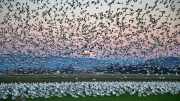
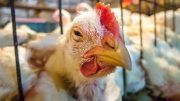
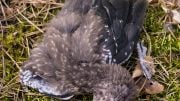
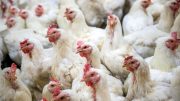


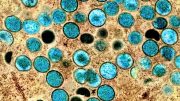

Be the first to comment on "WHO Warning: Ongoing Bird Flu Outbreaks in Animals Pose Risk to Humans"